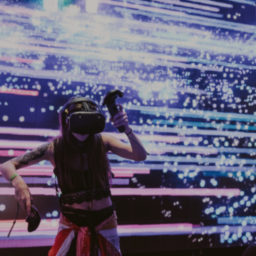The trigger: a new technology or a shift in the digital landscape. Aspiring founders are searching for a good use case to leverage that development and turn to something they’re passionate about. Music. With a vague understanding of the music business, they proudly announce their plan that will totally disrupt the industry.

People who’ve spent a decade in music have likely seen a dozen of companies promising to disrupt come and go. Disruption doesn’t sell. Solving problems does. The most common misunderstanding seems to stem from a fallacy around intermediaries and that disintermediation always improves things. The oversimplified view is that everything besides the artist & fan is ‘extra’ and both would profit if it can be successfully disrupted.

The reality is that things don’t function as an artist-management-label-distributor-DSP-fan chain. Music doesn’t always travel through it like that. Value doesn’t always travel through that chain. Instead there’s a whole network of connections where various types of value are exchanged, connected and created. In most cases it’s not linear; it’s a network.
The above may seem obvious, but this misunderstanding occurs time and time again. It leads founders to present themselves in an adversarial way to parts of the industry that actually should be their customer. If you can do X better than how a label is currently doing that, then that label might be happy to pay you for it. Artists & their management have a ton of things to do, so in many cases they’re happy to let labels or label services companies take care of some of it.
Don’t get me wrong: there are plenty of inefficiencies and practices of exploitation in the music industry that need to be disrupted. These may occur anywhere in the ecosystem (which also includes other parties like everything related to live, merch, PROs, etc) or in the connections between players. They typically don’t apply to an entire domain, e.g. ‘all labels’ or ‘all booking agencies’. Even when they do, like in the case of inefficiencies or friction, there may be other aspects of those businesses that would not benefit from complete disruption.
What I’m saying is do your research. Create a map of the industry’s domain you’re interested in and also map out everything adjacent to it, because there will be unforeseen connections. Understand how companies collaborate, what goals they’re trying to achieve, how they add value, and where frictions may occur. Read Don Passman‘s All You Need to Know About the Music Business. Speak with people to understand whether your research is based on current-day practices, because it definitely happens that people launch companies with assumptions based on early 2000s practices.
Music is complex. Part of it unnecessarily, but there’s a reason why things are structured this way. Figure out those reasons. Learn how others leverage those reasons to pioneer new businesses. Identify the trends. Understand the complexity to avoid endless pivots and repositioning. Music is in need of innovation – do it through partnership.




